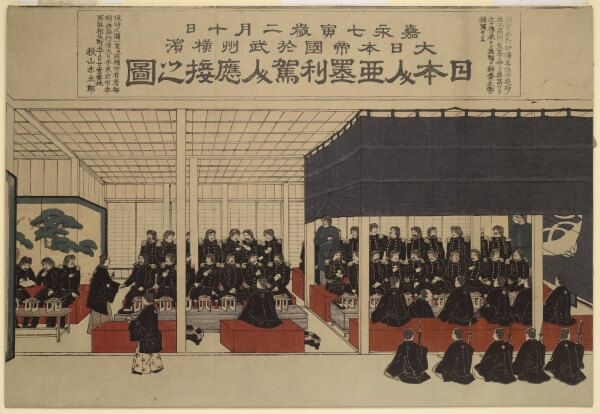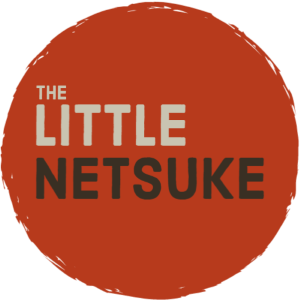When different groups of people meet, it is natural for language to be exchanged. The language traded may be used to describe new ideas, cultural phenomena or phrases that capture the imagination.
While the relationship continues, so does this swapping of language. A good example of this ongoing process is the recent adoption from German of the phrase ‘ear worm’ to describe a catchy song.
So, it’s not surprising that some language exchange has taken place between Japanese and English-speaking people. If you have ever studied Japanese you will be familiar with the litany of English words adopted into Japanese. This can make it feel like a one-sided process.
However, English has absorbed some language from Japan. The most recognisable adoptions are words that describe Japanese culture, like karaoke, sushi or kimono. But there is also a group of words whose Japanese origins are more obscure. This article looks at 4 such examples of English words with hidden Japanese origins.
Before moving onto each word’s history, we’ll explore its origins. See it you can guess what the English word is from the Japanese origin.
大君(たいくん)
Origin
This word consists of two Japanese kanji characters that combined have the meaning ‘great lord’. However, its English descendent has undergone a shift in meaning and now refers to a particularly wealthy or powerful businessman.
Though the English spelling has been altered, by way of a hint the original Japanese word is ‘taikun.’
History
Despite the alterations, you can probably hear an echo of the original Japanese ‘taikun’ in the English derivative ‘tycoon’. The history of how this word came into English is fascinating.
It began in the mid-19th century. Once Japan was opened to the world in 1853, the Japanese people were presented with a new challenge; how to explain their country and systems to foreign powers with little knowledge of Japan.

Probably the most fundamental element to explain was the political dynamic between the Emperor and the Shōgun. To achieve this, the foreign visitors were taught that the Shōgun was the ‘great lord’ or ‘taikun’.
So, the foreign visitors followed the lead of their Japanese hosts and referred to the Shōgun using this title. Indeed, when the word was imported into English and used outside of the Japanese context in the early 1860s it retained a political flavour.
‘Tycoon’ appeared in satirical letters and other articles published in American newspapers in 1860, as well as in the diary of Lincoln’s secretary in 1861. From this time onwards tycoon gained wider recognition in the U.S.
Then in the second quarter of the 20th century tycoon shed its political connotations in favour of the business-related meaning of today. Its Japanese origins becoming obscured over time.
人力車(じんりきしゃ)
Origin
Our second word remains closer to the Japanese original, though its origin is often misplaced. This word describes a form of transport that can be seen in many cities and tourist hot spots around the world, though sometimes with a small engineering alteration in more recent years.
An understanding of the three characters will make its English cousin clear. The three kanji characters that make up this word are人 (person), 力 (power) and 車 (transport). Though the English has dropped the pronunciation of the first character, 人 (person), and anglicised the last, 車 (transport), you can probably make an accurate guess as to which English word it inspired.
History
It is of course rickshaw, based on the Japanese pronunciation of jinrikisha. Thus, contrary to popular belief the rickshaw was not a Chinese, but Japanese invention. A trio of Japanese businessmen invented and introduced the rickshaw in Tokyo in 1869. By 1872 there were 40,000 rickshaws throughout Japan.
This new form of transport was inspired by western carriages, but as human labour was cheaper than horse power at the time, the person powered transport (jinrikisha) was born.
Similar to modern taxis, a rickshaw runner needed an official licence, a seal obtained from the trio of inventors. Once a licenced runner your life revolved around your rickshaw. It was common to sleep under it at night and there was even a compartment for your belongings beneath the seat.
On average, runners could expect to travel 48 kilometres at a speed of around 8 kilometres an hour. Despite the hard lifestyle, from 1873 this cheap form of public transport spread at speed throughout Asia.
Superseded by the automobile, the popularity of the rickshaw in Japan declined year-on-year. Until, despite a brief resurgence due to shortages following the second world war, the rickshaw took its place as a fun tourist experience.
班長(はんちょう)
Origin
The third word comes from a more troubled time in Japanese-international relations. The origin word is the Japanese for squad or group leader. Though similar to tycoon, its English offspring received an altered pronunciation, it retained the original meaning of leader.
The original Japanese pronunciation is ‘hancho’.
History
The small replacement of the second letter with o gives us the rather Spanish sounding colloquial English ‘honcho’.
As can be surmised from the meaning ‘squad or leader’, this word’s path into English was through the Second World War. Captured Allied servicemen had to refer to prison camp guards and other personnel as ‘hancho’.
This use of the word can be found in a number of memoirs written by POWs, including Ernest Norquist, an American soldier who was serving in the Philippines at the outbreak of war.
The term remained in popular use within the U.S. military until it made the jump to the wider American population in the 1960s. From there it has disseminated among the people of the English-speaking world.
絵文字(えもじ)
Origin
In contrast to the previous words in this list, the last adoption has retained its original spelling. This final word is used in modern electronic messaging and as such it is the newest Japanese adoption into English on this list.
As is common in Japanese, this is a compound word. The first word being 絵 and meaning picture, while the second 文字means letter or character of an alphabet. Thus, it is akin to the English word pictograph.
Combining its meaning, simple pictures used to convey meaning with its use related to electronic messaging may help when guessing the English word.
History
The Japanese spelling, which has been adopted wholesale into English, is emoji.
As surprising as it may seem, emoji is originally a Japanese word. Its use within electronic messaging began in Japan in 1999, when Shigetaka Kurita created a list of 176 pictographs for use with pagers in Japan.
Unlike the current image of the little round faces, most of the original set were objects. This makes sense of the choice to refer to them as pictographs, as they were intended to replace entire words in a sentence.
But hang on, what about emoticon? That’s not a Japanese word, but it is reasonable at first glance to think there is some relation to emoji. Therein lies the secret to the emoji success story.

While emoji and emoticon share the first three letters, they do not have a shared origin. Emoticon is a mashup of emotional and icon. Born in 1982 it refers to the range of sideways faces : ) that can be easily typed on any keyboard.
When it comes to emoji, the first three letters, that seem at first to be inherited from words like emotion or emotional, are in fact unrelated. This coincidence is in fact the incorrect parsing of the Japanese compound word e/moji, not emo/ji.
Since the adoption of emoji into the Unicode Standard in 2010 and the subsequent emoji explosion, this coincidence helped this word gain wide acceptance, while also obscuring its Japanese origins. While in 1999 there were only 176 emoji, today the official list contains 3,304, propelling emoji into worldwide recognition, use and even Hollywood.
Summary
So, there you have four English words with hidden Japanese origins; tycoon, rickshaw, honcho and emoji.
Discovering the obscure Japanese origins of these words is interesting, but their interest goes beyond that. These four words can be seen to chart the changing relationship between Japan and the English-speaking world from the 19th century to today.
We started with tycoon, developing from attempts to understand each other after centuries of limited contact. Then we learnt about honcho, with is grounding in conflict. So, the adopted words and when they are adopted point to the situation between Japan and other world communities.
As such it should be a source of happiness, that the most recent acquisition mentioned on this list, has its base in international communication and cooperation. I wonder what the next arrivals will be and what they will tell us about the relationship between English-speaking people and the Japanese people.
Are there any other English words with unexpected Japanese origins that we missed? Let everyone know in the comments.





